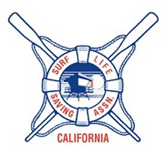History
 When Australia was chosen to host the 1956 summer Olympics, lifesavers there decided to hold an invitational lifesaving competition to be known as the Australian Olympic International Surf Championships at Torquay Beach, outside Melbourne, Victoria. [Australia Medallion] The Honorable Judge Adrian Curlewis of
When Australia was chosen to host the 1956 summer Olympics, lifesavers there decided to hold an invitational lifesaving competition to be known as the Australian Olympic International Surf Championships at Torquay Beach, outside Melbourne, Victoria. [Australia Medallion] The Honorable Judge Adrian Curlewis of .gif) Australia appointed Arthur Parkens, an Australian lifesaving instructor, to solicit participation from the United States. California lifeguards and a contingent from the Territory of Hawaii decided to participate. Both teams were required trained and awarded, "The Australian Surflifesavers Medallion," so as to meet the international competition standards required for the event.
Australia appointed Arthur Parkens, an Australian lifesaving instructor, to solicit participation from the United States. California lifeguards and a contingent from the Territory of Hawaii decided to participate. Both teams were required trained and awarded, "The Australian Surflifesavers Medallion," so as to meet the international competition standards required for the event.
The California lifeguards organized themselves under the banner of the Surf Life Saving Association of America (SLSA), although they were .gif) solely from the Los Angeles County and Los Angeles City lifeguard agencies. This was the first American lifeguard association of its kind, even if its name was a bit grand considering its narrow scope.
solely from the Los Angeles County and Los Angeles City lifeguard agencies. This was the first American lifeguard association of its kind, even if its name was a bit grand considering its narrow scope.
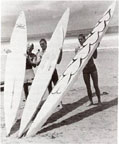 Team members from the SLSA included Team Captain Rusty Williams of Los Angeles County (LACO), Team Coach Kirby Temple (LACO), Team Manager Herb Barthels, Sr. of Los Angeles City (LACity), Tad Devine (Santa Monica City), Bob Burnside (LACO), Mike Bright (LACO), Greg Noll (LACO), Dave Ballinger (LACO), Chick McIlroy (LACO), Paul McIlroy (LACO), Sheridan Byerly (LACO), and Roger Jensen (LACO). The Hawaiian lifeguard team included Dr. Don Gustuson, Team Manager Harry Shaeffer, Team Coach Tom Shaeffer, Tom Moore, Tom Zahn, Dan Durego, Tim Guard, L. Honka, Peter Balding, and Shaky Felez.
Team members from the SLSA included Team Captain Rusty Williams of Los Angeles County (LACO), Team Coach Kirby Temple (LACO), Team Manager Herb Barthels, Sr. of Los Angeles City (LACity), Tad Devine (Santa Monica City), Bob Burnside (LACO), Mike Bright (LACO), Greg Noll (LACO), Dave Ballinger (LACO), Chick McIlroy (LACO), Paul McIlroy (LACO), Sheridan Byerly (LACO), and Roger Jensen (LACO). The Hawaiian lifeguard team included Dr. Don Gustuson, Team Manager Harry Shaeffer, Team Coach Tom Shaeffer, Tom Moore, Tom Zahn, Dan Durego, Tim Guard, L. Honka, Peter Balding, and Shaky Felez.
Picture on left: Zahn, Noll and Bright.
The event was held on November 26, 1956 and drew an immense crowd of 115,000 spectators.  The legendary "Duke" Paoa Kahanamoku of Hawaii served as the honorary event Chairman. In addition to the American and Australian teams, lifeguard teams from South Africa, Great Britain, Ceylon, and New Zealand participated.
The legendary "Duke" Paoa Kahanamoku of Hawaii served as the honorary event Chairman. In addition to the American and Australian teams, lifeguard teams from South Africa, Great Britain, Ceylon, and New Zealand participated.
As for the Americans, the Hawaiian Territory placed first in the Beach Relay. Tad Devine of California placed second in the swim. Bob Burnside of California placed third in the belt race.
.gif) Perhaps more importantly than the competition itself, lifelong relationships were built around this historic event and both countries were
Perhaps more importantly than the competition itself, lifelong relationships were built around this historic event and both countries were .jpg) to benefit tremendously. The American rescue tube and rescue buoy were first introduced to Australia on this tour, later to become staples of Australian lifesaving gear as they were in the US. Tom Zahn, Tom Moore, and Bob Burnside brought Malibu Balsa Surfboards with them, the first total Australian exposure to the Malibu Surfboard. When they departed Australia, the boards were left behind, which revolutionized surfing in Australia.
to benefit tremendously. The American rescue tube and rescue buoy were first introduced to Australia on this tour, later to become staples of Australian lifesaving gear as they were in the US. Tom Zahn, Tom Moore, and Bob Burnside brought Malibu Balsa Surfboards with them, the first total Australian exposure to the Malibu Surfboard. When they departed Australia, the boards were left behind, which revolutionized surfing in Australia.
After the event, LA County Lifeguard Chief Bud Stevenson decided to use SLSA in his efforts to upgrade professional lifeguarding. Chief Stevenson appointed Bob Burnside as President of the nascent organization and Lt. Don Hill as Secretary. Despite the broadly embracing name of Surf Life Saving Association of America, the early focus was to remain on Los Angeles County issues.
Bob Burnside called for representatives from as many Southern California lifeguard agencies as possible to attend a concept meeting at Santa Monica Lifeguard Headquarters in the winter of 1963. In attendance were Vince Moorhouse (Huntington Beach), Max Bowman (Huntington Beach), Don Rohrer (LA City), Dick Heineman (LA City), Tim Dorsey (Seal Beach), host Jim Richards (Santa Monica), and a representative from Long Beach.
The group agreed that they should establish a truly national organization, based on the structure of the Australian association, to be called the Surf Life Saving Association of America.
The early organization established Southern and Northern Chairmen of the State of California, and a temporary Executive Board was formed to establish a constitution, bylaws, and method of equal representation for the association. This put in place all the necessary criteria for affiliation with the organization by local chapters, allowing each chapter to participate equally in the first election of officers, which took place in 1965. In the meantime, temporary chairmen took charge.
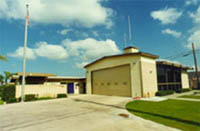 In 1964, Huntington Beach's newly dedicated lifeguard headquarters was adopted as the center for SLSA activities. In that same year, Howard Lee of LA County designed the national logo, which is still in use today. His design was influenced by a similar design that Tad Devine of the 1956 Australia team had created for the team uniform. Both are strikingly similar to the logo of the United States Life-Saving Service, an arm of the United States government, which had rescued shipwrecked sailors during the 1800s and 1900s, before being merged with the Revenue Cutter Service to form the US Coast Guard.
In 1964, Huntington Beach's newly dedicated lifeguard headquarters was adopted as the center for SLSA activities. In that same year, Howard Lee of LA County designed the national logo, which is still in use today. His design was influenced by a similar design that Tad Devine of the 1956 Australia team had created for the team uniform. Both are strikingly similar to the logo of the United States Life-Saving Service, an arm of the United States government, which had rescued shipwrecked sailors during the 1800s and 1900s, before being merged with the Revenue Cutter Service to form the US Coast Guard.
The National Surf Life Saving Association of America is Born
In 1965, the SLSA title was dropped in favor of the National Surf Life Saving Association (NSLSA) and the first election officers of was held, at this ![]() time for a one-year term of office. They were President Bob Burnside, Vice-President Dick Hazard (San Clemente), Treasurer Max Bowman, Secretary Don Rohrer, and Sergeant at Arms Tim Dorsey. The goals and objectives were identified and weekly meetings were agreed upon, rotating among different lifeguard headquarters for over a year. In another 1965 development, Australia was invited to send their national competition team to compete in the US.
time for a one-year term of office. They were President Bob Burnside, Vice-President Dick Hazard (San Clemente), Treasurer Max Bowman, Secretary Don Rohrer, and Sergeant at Arms Tim Dorsey. The goals and objectives were identified and weekly meetings were agreed upon, rotating among different lifeguard headquarters for over a year. In another 1965 development, Australia was invited to send their national competition team to compete in the US.
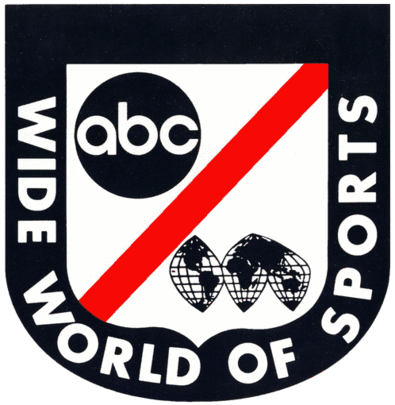 A year earlier, in 1964, ABC television's Wide World of Sports had filmed a lifeguard competition at Huntington Beach. During the competition, lifeguards Mike Henry and Pete Orth of Carpenteria, California, lost control of their dory on a 10 foot wave and crashed into the Huntington Beach pier. It became one of the Great Moments of 1964, replayed repeatedly for television audiences throughout America.
A year earlier, in 1964, ABC television's Wide World of Sports had filmed a lifeguard competition at Huntington Beach. During the competition, lifeguards Mike Henry and Pete Orth of Carpenteria, California, lost control of their dory on a 10 foot wave and crashed into the Huntington Beach pier. It became one of the Great Moments of 1964, replayed repeatedly for television audiences throughout America.
Building on this memory, in 1965 Wide World of Sports invited the NSLSA and the touring Australian team, to fly to the East Coast and  compete in a first ever East Coast/West Coast lifeguard competition. This televised, international event was held at Montauk Point on Long Island, New York. At this event, the concept of a truly national affiliation under the umbrella of NSLSA took seed. Also in 1965, Santa Cruz became the first lifesaving association outside Southern California to join.
compete in a first ever East Coast/West Coast lifeguard competition. This televised, international event was held at Montauk Point on Long Island, New York. At this event, the concept of a truly national affiliation under the umbrella of NSLSA took seed. Also in 1965, Santa Cruz became the first lifesaving association outside Southern California to join.
The year 1966 saw a new election of officers, with Bob Burnside remaining as president, Phil Stubbs of San Clemente as vice-president, Jack Buck as Secretary, and Don Rohrer as treasurer, with Tim Dorsey remaining as Sergeant at Arms. Also in 1966, the California Chief Lifeguard Association, which had first formed in the late 1930s, reconvened and appointed Vince Moorhouse as chairman. They conferred $431.80 from their association bank account to the NSLSA treasury, along with their blessings and pledge to support the organization.
On August 25, 1967, it was decided to change the term of office to two years. Mike Henry of California State (north) was elected president, Phil Stubbs of San Clemente remained vice-president, Bob Burnside moved to secretary, Dick Heinemann of LA City as treasurer, and Tim Dorsey continuing on as Sergeant at Arms.
In 1967, NSLSA sent a competition team to Ft. Lauderdale, Florida to compete in the first recognized East versus West lifeguard championships, continuing the national affiliation concept among all the agencies involved. Teams from New York to Miami and the West Coast team battled it out in a rousing competition.
The East Coast/West Coast competition helped further an effort to make NSLSA a truly national organization. Lt. Jim Holland of the Miami Beach Patrol was appointed to act as East Coast liaison for NSLSA. He was responsible for bringing into the first Florida chapters into NSLSA: Miami Beach and Boca Raton. Secretary Bob Burnside flew to Florida to tour Florida beaches with Lt. Holland in an effort to further increase Eastern affiliations.
 It was also during 1967 that the Australians invited the NSLSA affiliated lifeguards back for a competition tour that included several unusual feats. This included a stunning win by the 16 year old Huntington Beach lifeguard Spike Beck in the Australian National Championship Junior Belt Race. At the New South Wales championships Australian veteran "Spas" Hearst, Bob Burnside, Paul Mathies (LACO), Jim Richards (Santa Monica), and Ruby Kroon teamed up for a binational win in the surfboat race.
It was also during 1967 that the Australians invited the NSLSA affiliated lifeguards back for a competition tour that included several unusual feats. This included a stunning win by the 16 year old Huntington Beach lifeguard Spike Beck in the Australian National Championship Junior Belt Race. At the New South Wales championships Australian veteran "Spas" Hearst, Bob Burnside, Paul Mathies (LACO), Jim Richards (Santa Monica), and Ruby Kroon teamed up for a binational win in the surfboat race.
Pictured left to right: Ray Bray, Spike Beck, Jerry McGraw, Joe Metzger
In 1969, the change in officers found Phil Stubbs elected president, Bob Shea of San Diego vice president, Logan Lockabey of California State secretary, Dick Heinemann treasurer, and Tim Dorsey still watching the door as Sergeant at Arms. That year, the first international educational exchange was undertaken with a visit to Auckland, New Zealand by Max Bowman (Huntington Beach), Phil Stubbs (San Clemente), and Logan Lockabey (Newport Beach). It was also in that year that NSLSA received membership in the Council for National Cooperation in Aquatics (CNSA).
In 1969 that the Dade County (Florida) Board of Supervisors requested that NSLSA representatives journey to Miami and review lifeguard  procedures there in the wake of a rash of ocean drownings. Bob Burnside and Phil Stubbs handled this task, with Paul Cocke (LA County) and Bill Richardson (Huntington Beach) assisting. The outcome included recommendations that resulted in installation of a communication system, new vehicles and equipment, new qualification requirements, increased funding, and the hiring of Lt. Holland as Chief of the Dade County Lifeguard Division. It was the first demonstration of the potentially power of NSLSA to improve lifesaving standards nationwide. In 1970 Hempstead Beach, New York joined NSLSA. It was the first member chapter from the upper East Coast. The NSLSA newsletter changed its name that year to Ocean Lifeguard Magazine. The editor was Tim Dorsey.
procedures there in the wake of a rash of ocean drownings. Bob Burnside and Phil Stubbs handled this task, with Paul Cocke (LA County) and Bill Richardson (Huntington Beach) assisting. The outcome included recommendations that resulted in installation of a communication system, new vehicles and equipment, new qualification requirements, increased funding, and the hiring of Lt. Holland as Chief of the Dade County Lifeguard Division. It was the first demonstration of the potentially power of NSLSA to improve lifesaving standards nationwide. In 1970 Hempstead Beach, New York joined NSLSA. It was the first member chapter from the upper East Coast. The NSLSA newsletter changed its name that year to Ocean Lifeguard Magazine. The editor was Tim Dorsey.
 World Life Saving was created in 1971 in Australia, to include the national lifesaving federations of Australia, Great Britain, New Zealand, South Africa, and the US. Chief Vince Moorehouse of Huntington Beach was appointed the NSLSA International Liaison to WLS, then President from 1976-80. Max Bowman served from 1988-1993. On 24 February 1993, WLS merged with FIS to form the International Life Saving Federation (ILS). By that time, WLS represented more than 20 full member national lifesaving organizations.
World Life Saving was created in 1971 in Australia, to include the national lifesaving federations of Australia, Great Britain, New Zealand, South Africa, and the US. Chief Vince Moorehouse of Huntington Beach was appointed the NSLSA International Liaison to WLS, then President from 1976-80. Max Bowman served from 1988-1993. On 24 February 1993, WLS merged with FIS to form the International Life Saving Federation (ILS). By that time, WLS represented more than 20 full member national lifesaving organizations.
In 1971, President Phil Stubbs was reelected, Eric Lucas of Laguna Beach was elected vice president, Logan Lockabey remained as secretary, Bill Ward became secretary, and Tim Dorsey stayed on for another term as Sergeant at Arms. In that year, recommended beach standards and certification were first completed for all lifeguard classifications in an effort to improve standardization and professionalism. Hempstead Beach withdrew their membership that year, after only one year in the organization.
Two other organizations requested NSLSA professional help in 1971, Big Surf surf park in Tempe, Arizona and the State of New York. In the case of the latter, a team of 11 members were sent to help in training and appraisal of New York lifeguard practices, but when they arrived they learned that they had been summoned amidst a job action and were being enlisted to ensure lifeguard protection in the case of a strike. This event turned out to create some seriously bad feelings between New York lifeguards and the NSLSA, which were not to subside for many years.
In 1972, the Internal Revenue Service granted NSLSA tax-exempt status as a not for profit, educational organization. World Life Saving held its Board of Directors meeting in Huntington Beach that year, the first international lifesaving meeting in America. The NSLSA newsletter, under the title "Certification," also mentions that NSLSA was preparing the groundwork for a training certificate to be issued to newly trained lifeguards [and] studying a proposal from the YMCA of America to certify lifeguards for that organization."
In 1973, the sixth Executive Board was elected to include Vince Moorhouse (Huntington Beach) as president, Eric Lucas (Long Beach) as vice president, Buddy Belshe of Newport Beach as secretary, Bill Ward (Long Beach) as treasurer, and Tim Dorsey sergeant at arms. That year also saw the development of agreements on standardization of beach warning flags and the first international training officers exam.
South Africa was the next destination for an education and competition tour. An 11 man team was sent in 1974 that included Max Bowman, John Patty (Long Beach), Tim Dorsey, Mark Bodenbender (Huntington Beach), BI Gerald, (Huntington Beach), Buddy Belshe (Newport Beach), Bill Owen (San Diego), Sheridan Byerly (San Clemente), Richard Marks (LA City), Paul Mathies (LACO), and Topper Harock (Newport Beach).
In 1974, NSLSA conducted a site review and beach lifeguard service survey for the City of Santa Cruz. This process demonstrated potential of the NSLSA to help influence management of beach lifesaving organizations. It was a process that was used many times again in future years.
In 1975, Eric Lucas (Long Beach) stepped up to become president, with Buddy Belshe (Newport Beach) as vice-president, Dick Miller of Long Beach as secretary, and Max Bowman (Huntington Beach) as treasurer. Also in 1975, Vince Moorehouse (Huntington Beach) was elected president of World Life Saving.
The United States Lifesaving Association is Created
Over the years, NSLSA had been very successful in organizing national and international exchanges of information, competitions, and public education efforts to help reduce drowning. Progress made initially to embrace East Coast agencies however, had languished and the organization remained largely an association of California lifeguards and a few chapters from Florida.
Some felt that the organization should remain a surf lifesaving organization, barring participation from lifeguards at lakes, rivers, and similar venues. Others felt that all lifeguards at natural, open water locales should be eligible for membership. One of these was Sheridan Byerly (now of San Clemente), who had been a member of the 1956 Australian team.
The 1977 elections were a turning point. It was anticipated by many that Buddy Belshe would be elected president that year, but in an unexpected upset, Sheridan Byerly was elected instead. Considering that he had never been elected to an NSLSA post before that time, his election was a surprising event. As it turns out, it was to portend further change. In that same year, Dick Miller was re-elected vice-president, Max Bowman treasurer, and Larry Gibson of Newport Beach secretary. Partway through the two-year term of office, Gibson resigned his post and Byron Wear of San Diego was appointed to replace him. Wear would later become the first USLA Executive Director until 1984. Many years later he was to be elected to the San Diego City Council.
 A priority for Byerly was the push to make NSLSA a truly national organization. A debate occurred over opening the guidelines for membership to allow personnel from lake, river and similar venues. It was hotly contested as many felt that the association should incorporate only ocean agencies and that bringing in other areas that would not necessarily be year-round operations, would shift the power to part time and non-ocean agencies, thus creating a philosophical difference of priorities. Nonetheless, Byerly persevered. Changes to the bylaws were drafted and plans were laid to create regions throughout the United States with their own presidents and executive boards.
A priority for Byerly was the push to make NSLSA a truly national organization. A debate occurred over opening the guidelines for membership to allow personnel from lake, river and similar venues. It was hotly contested as many felt that the association should incorporate only ocean agencies and that bringing in other areas that would not necessarily be year-round operations, would shift the power to part time and non-ocean agencies, thus creating a philosophical difference of priorities. Nonetheless, Byerly persevered. Changes to the bylaws were drafted and plans were laid to create regions throughout the United States with their own presidents and executive boards.
In February 1979, Byerly and Wear took leave of their jobs and began recruiting work in Florida, encouraging further participation. At that time, Florida membership centered on Boca Raton and Dade County. They met with lifeguards from many agencies, including Joe Wooden and Tom Renick of Volusia County.
In May 1979, the NSLSA Board of Directors met in Santa Cruz, knowing that the debate over broadening the membership scope of the 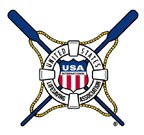 organization was coming to a head. President Byerly chaired a meeting thick with heated and passionate discussion about the course of the organization's future. Ultimately, the NSLSA Board of Directors voted to change the name of the organization to the United States Lifesaving Association (USLA) and adopt the various bylaw changes that had been drafted. It was a truly historic event, which set the stage for a broader and more embracing organization. It was agreed that members could include, any member of an ocean, bay, lake, river, or open water lifesaving or rescue service, including chiefs, directors, and their equivalent.
organization was coming to a head. President Byerly chaired a meeting thick with heated and passionate discussion about the course of the organization's future. Ultimately, the NSLSA Board of Directors voted to change the name of the organization to the United States Lifesaving Association (USLA) and adopt the various bylaw changes that had been drafted. It was a truly historic event, which set the stage for a broader and more embracing organization. It was agreed that members could include, any member of an ocean, bay, lake, river, or open water lifesaving or rescue service, including chiefs, directors, and their equivalent.
Since that time, the United States Lifesaving Association, an idea launched in California, has thrived, having a major and very positive influence nationally over drowning prevention and lifeguard training standards. The first truly national competition was conducted in 1980 in San Diego, California under the USLA banner, a tradition that has continued annually ever since. In the spring of 2014, USLA celebrated their 50th Anniversary at a Board of Directors meeting and Educational Conference hosted by the CSLSA’s Huntington Beach chapter. Click HERE to view the program agenda.
The Southwest Region of the USLA incorporated under the name of Western United States Lifesaving Association on June 24, 1983. A Certificate of Amendment was validated on July 25, 1989, whereby the Western USLA became officially named the California Surf Lifesaving Association. Click HERE to view the Articles of Incorporation and Certificate of Amendment.
